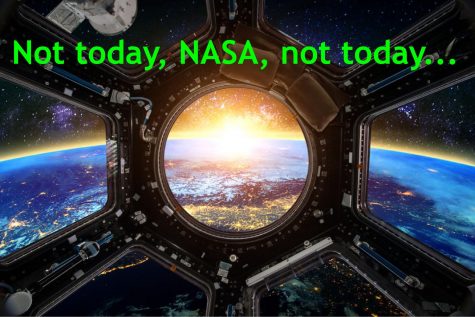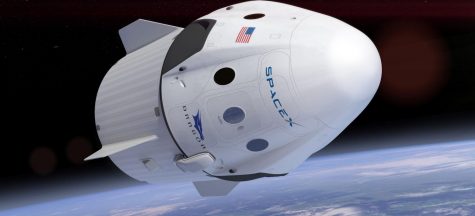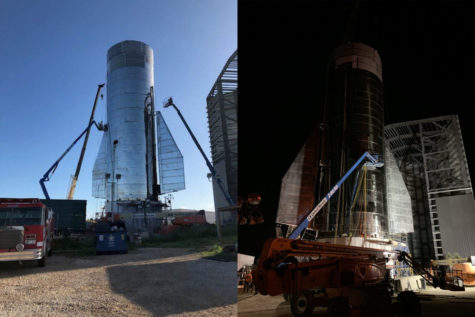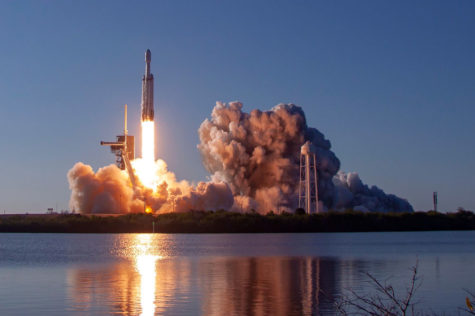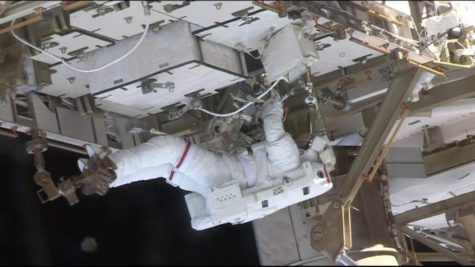NASA Turns 60!

October 1, 2018
October 1 is the 60th anniversary of NASA, commemorating 60 years of progress and advancement in technology since the agency’s creation in 1958. NASA did exist before 1958, but not under the same name.
The National Advisory Committee for Aeronautics, or NACA, was formed in 1915 after the outbreak of the first World War, made to test and develop aeroplanes. NACA remained rather hidden for most of the beginning of the 20th century but became more widely known in the 1930s and ‘40s due to the second World War.
NACA made many accomplishments within its 43-year lifespan, such as supersonic flight, advanced missiles during the Cold War, and even beginning the process of developing heat shields for possible space flight in the future. President Dwight D. Eisenhowe authorized NACA to officially become NASA, the National Aeronautics and Space Administration, to compete with the Soviet Union, which had launched Sputnik the year before.
The accomplishments made ever since that day on October 1, 1958, are tremendous. Check out this detailed and interesting site to get the whole story:
https://www.nasa.gov/specials/60counting/index.html
Of course, if you don’t have the time, here are some highlights.
The Rising Future
What NASA was able to accomplish in their first ten years of existence is phenomenal. But just ten days after the creation of NASA, their first ever spacecraft was launched, Pioneer 1, which lasted a total of 48 minutes recording the surface of the moon and Earth. Technical difficulties caused it to come falling down to Earth much sooner than planned, but it was a remarkable first achievement.
Other satellites such as TIROS 1 and ECHO 1 were fantastic landmarks in satellite history, with TIROS 1 being the first ever weather satellite and ECHO 1 being the first communications satellite.
Almost three years after NASA’s creation, Alan Shepard was launched into space. He became the first American in space, just a month after Russian cosmonaut Yuri Gagarin became the first human in space. Alan Shepard remained in space for 15 minutes in a suborbital flight. Just a year after that, John Glenn took the prize of being the first man to be in orbit around the Earth, making three orbits in just five hours.
In 1965, Ed White became the first American to perform a spacewalk, which was crucial for learning more valuable information for developing spacesuit technology.
The Apollo Era
The Apollo era was one of the most influential eras of humanity’s evolution. But it wasn’t without its difficulties. The very first Apollo mission ended in disaster. Gus Grissom, Ed White, and Roger Chaffee were in the crew capsule when it caught fire, resulting in all three dying on Jan. 27, 1967. This resulted in unmanned Apollo flights until Apollo 6 in 1968.
Apollo missions 7 through 10 were all manned orbiting tests, with 7 and 9 orbiting Earth, and 8 and 10 orbiting the Moon. Apollo 8 resulted in the legendary Earthrise image.
As we all know, Apollo 11 was the mission that resulted in the first people walking on the moon, with Neil Armstrong and Buzz Aldrin making their giant leaps on July 20, 1969.
Apollo lasted until Dec. 11, 1972, with the final mission being Apollo 17. Cancelation of the Apollo program was most likely due to the Vietnam War. At this point, no one has walked on the moon for nearly 50 years now. Almost fifty years. Those few trips to the Moon changed the world forever but ended because of a war. We totally could have had a base on the moon by now.
The Evolving 80s
Although there would be no more humans leaving the gravitational pull of Earth in the ‘80s, the decade would prove a good one for the development of modern rockets, more involvement in space, and probes that went further than we could ever imagine.
The introduction of the Space Shuttle, the United States’ new flagship after Saturn V, brought 35 new astronauts. This was a big jump from the original 10 or 15 astronauts who were selected every other year. This crew included the first African American and female astronauts.
Pioneer 10 was monumental for deep space probes, being the first of only five manmade objects to take the trajectory to leave the solar system. Pioneer was launched in 1973 but exceeded the orbits of all known planets in 1983.
The International 90s
The Space Race neared its end in the ‘80s, but the ‘90s brought about a new era, one in which the world no longer competed in space affairs, but worked together.
One of the biggest and most challenging accomplishments of the human race was the International Space Station. The agreement to create the ISS was entered into in 1993 by the United States, Russia, Japan, Canada, and the European Space Agency. Development was begun in 1998.
But only a few years before construction was begun on the ISS, the Hubble Space Telescope was launched in 1990. Hubble, which has taken legendary pictures such as the “Pillars of Creation,” is still the world’s most powerful space-based telescope.
In the same year that ISS construction began, the Pathfinder-plus, NASA’s first solar-powered aircraft, broke the record flight altitude with an altitude of 80,201 feet, proving that solar-powered aircraft could be used in the future.
Today
Some major accomplishments in modern times include the Voyager 1 deep space probe, which in 2012 became the first manmade object to leave our solar system; the first commercial resupply mission to the ISS in the same year; getting the first close up views of Pluto in 2015; discovering the first Interstellar object, the comet Oumuamua, in 2017; and countless other achievements.
If NASA can put a man on the moon, observe all of the planets in our solar system, build two space stations, and already have plans to visit Mars with less than 1 percent of the U.S. budget in only 60 years, where can they go in the next 60?


